Japanese Firefighters — Traditional Style
Looking like a acrobatic performance there is of course more history to this demonstration on the streets of Kawagoe, just outside Tokyo
This performance was held three times during the spring festival in Kawagoe. When I arrived, the group of men just had erected the ladder, 6,60 m tall. Soon one of them was climbing up.
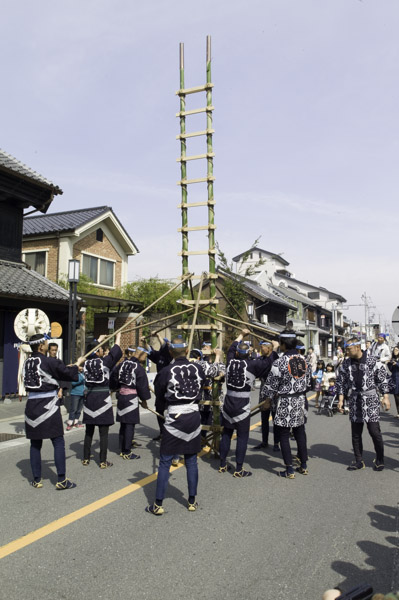
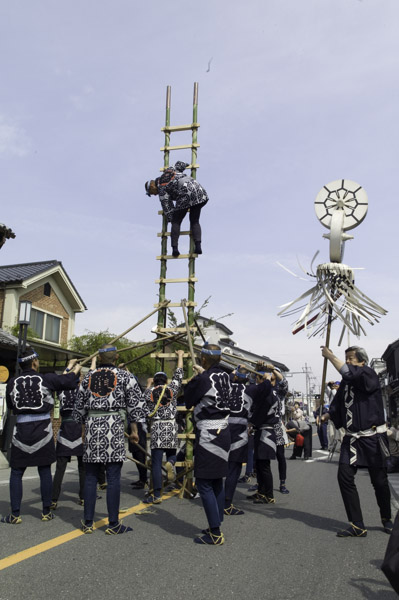
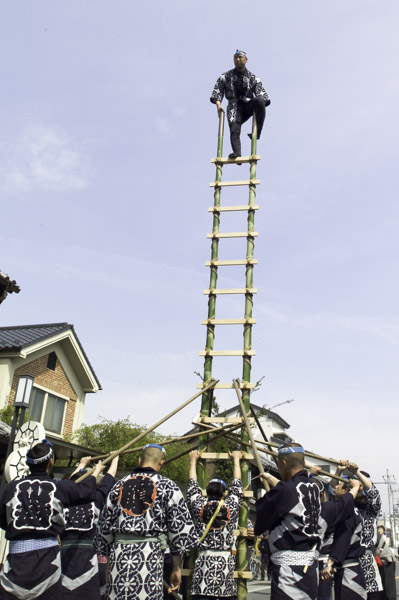
He and, following him consecutively, four of his colleagues took stunning artistic positions on top of the ladder.

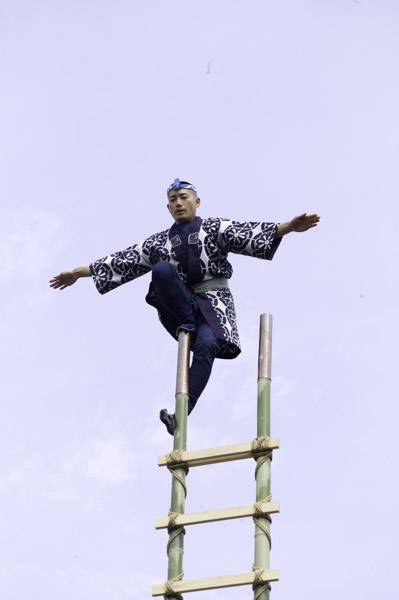
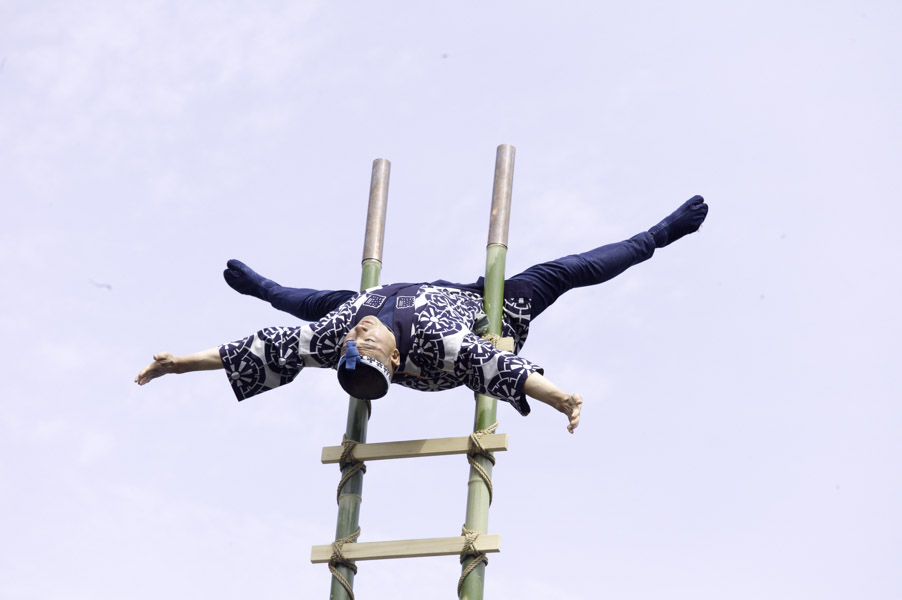
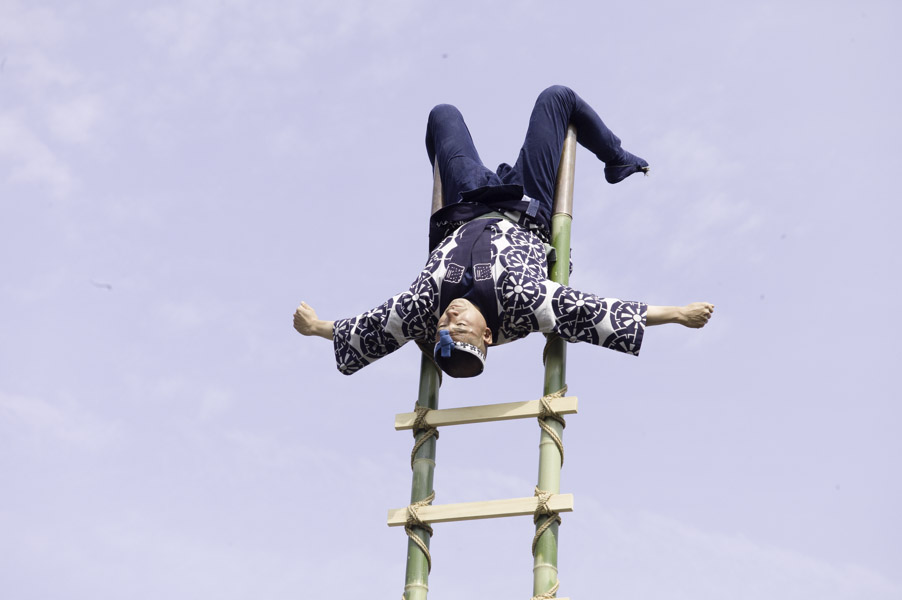
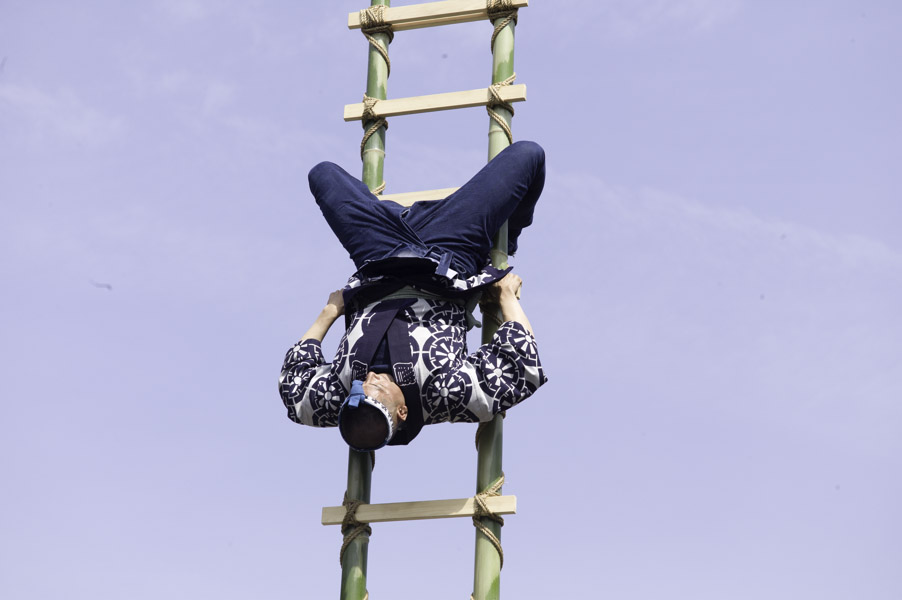

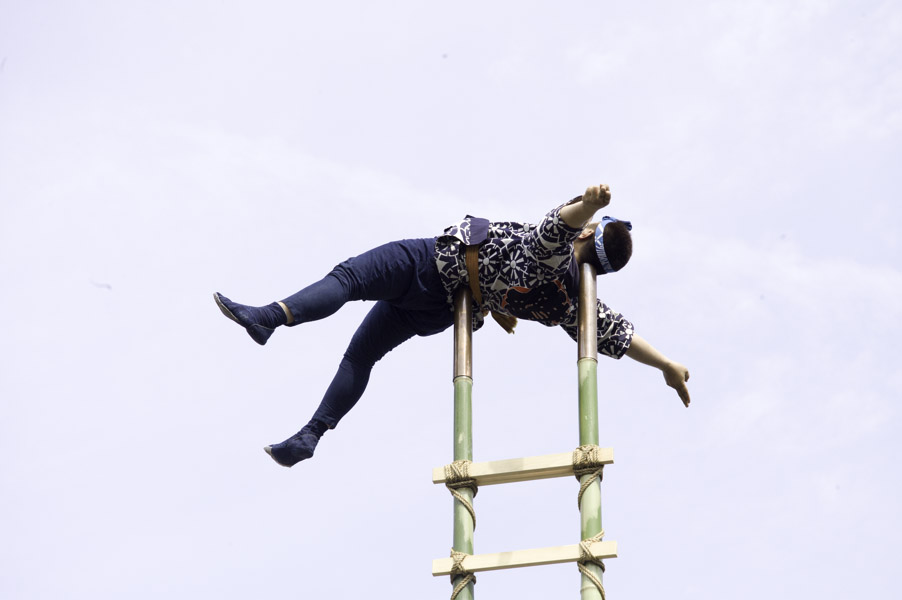
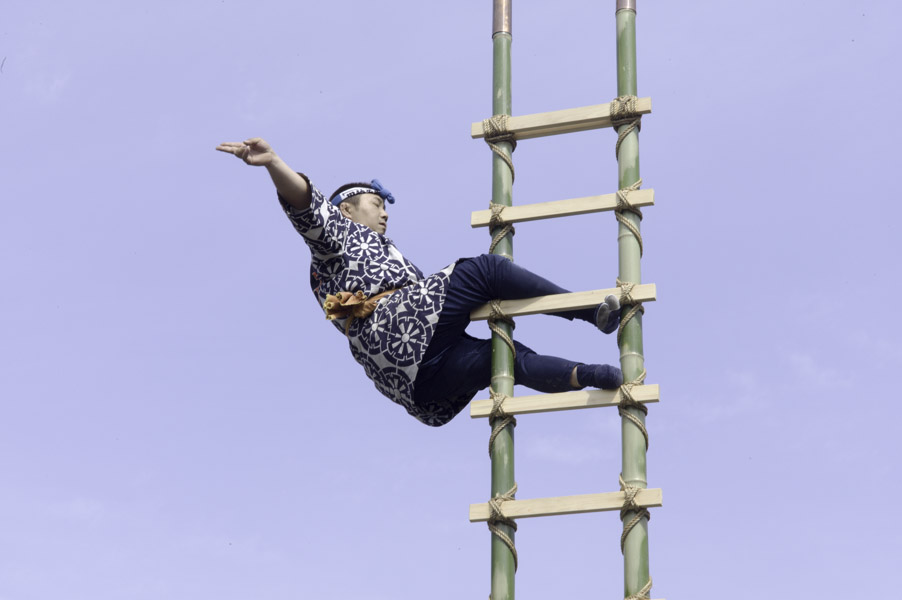
Given the traditional wooden construction of japanese houses and the fact, that from ancient days open fire was used for cooking and heating, fire was one of the big dangers in daily life. So local fire brigades were set up, mainly consisting of men who were experienced in working in higher altitudes like steeplejacks,carpenters or construction workers. Swiftness,manliness and prudence were required of a steeplejack since he performed dangerous works on a high location,and the same qualities were required of a
firefighter. In the case of fire the brigade erected a 6.6 meter high ladder and one climbed to its top to identify the location of the fire and to indicate wind directions etc.
Especially in the highly populated areas an efficient network of firefighters was necessary.
In 1719 under the Tokugawa 8th Shogun Yoshimune, 48 town fire brigades were established in Edo(present Tokyo)by the advocacy of a then town magistrate Ooka,the Lord of Echizen. This was based upon the idea of self-protection and autonomy that the town of Edo be protected by citizens of Edo. Later in 1867 with the reformation of systems by the Meiji Restoration,the town fire brigades came under the Tokyo Metropolitan Police.
Today the Edo Firemanship Preservation Association is on of the organisations who is dedicated to preserve the heritage of this tradition, inlcuding the “kiyari” songs and ladder-top stunts that were left through the long tradition and history from town fire brigades with their heart and mind and hand them
down to posterity.(Details at http://www.edosyoubou.jp/)
Let´s continue following the group to their next performance.
There are two men visible carrying a “Matoi”, which is the banner of the specific firebrigade.It is said that the company standard originated in the 15th century,when it was the symbol of a commander’s force at the scene of war.Also it is said that after the birth of the town fire brigades in 1719,it was introduced in the fire service as the company standard. Matoi consists of a body called “toban” and “baren” or flaps hanging down from it that are made of paper or leather.The standard is about 2.4 meters high and weighs about 20 Kg.
Again a quote from the above mentioned website “In order to be recognized of its existence, a fireman from each fire company stood its standard an top the roof of a house on fire. Other members or the company had to
fight fire desperately in order to prevent the standard from getting burnt.
It was a shame for the standard bearer to let go his hold of it even in burning names. It was rather his long-cherished desire lo die together with the standard.Even today the standard is the symbol of each company, which holds it in trust carefully as something to go by.” So the legend goes.
Once the ladde is erected another round of stunts begins. During the stunts the MC calls the stunts by its specific japanese names. Some of them are clearly showing that the had a operational meaning during “combat” others are rather “fun” creations.
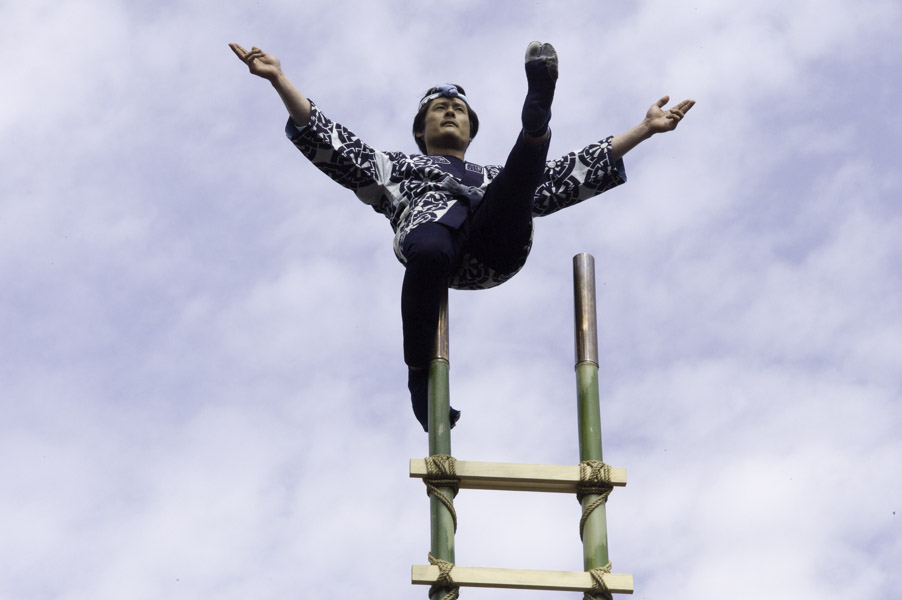
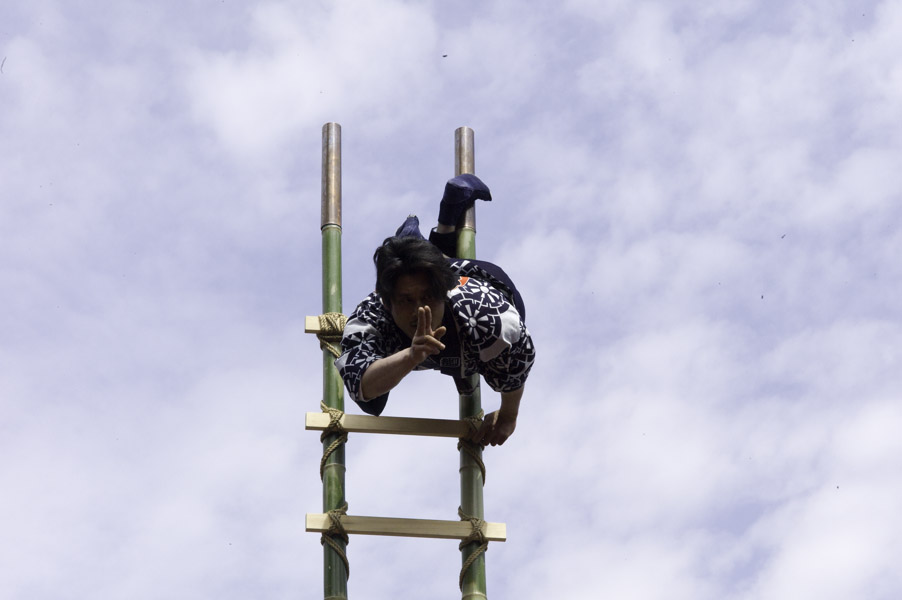
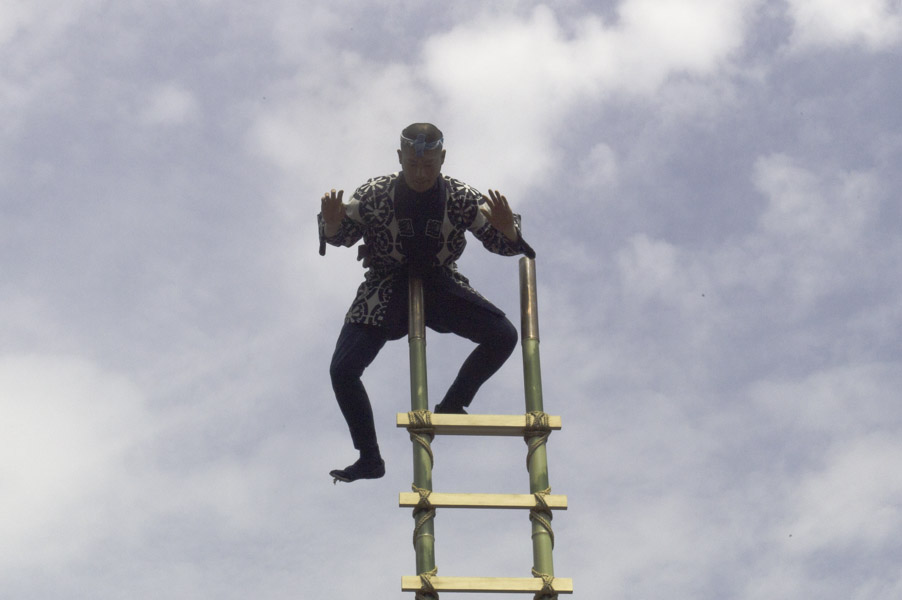
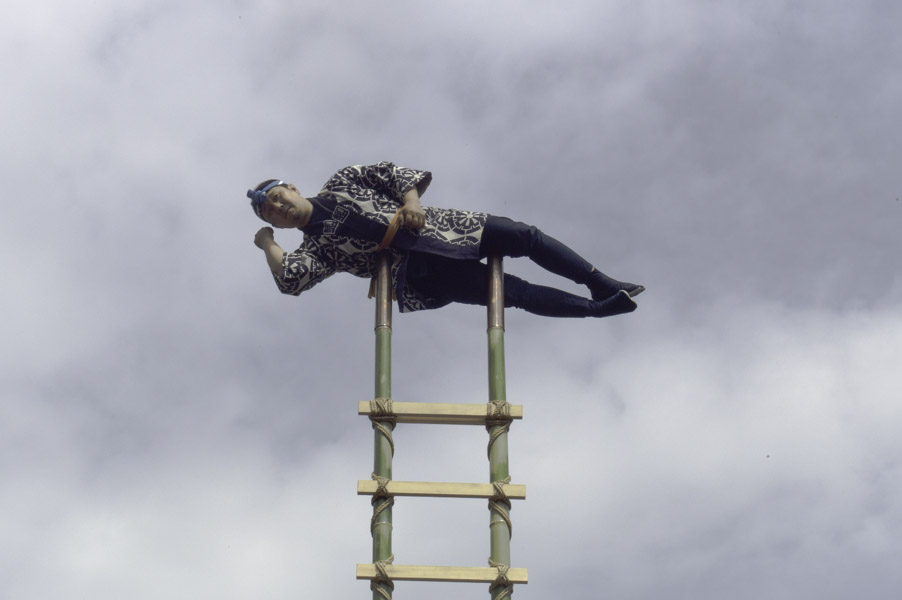
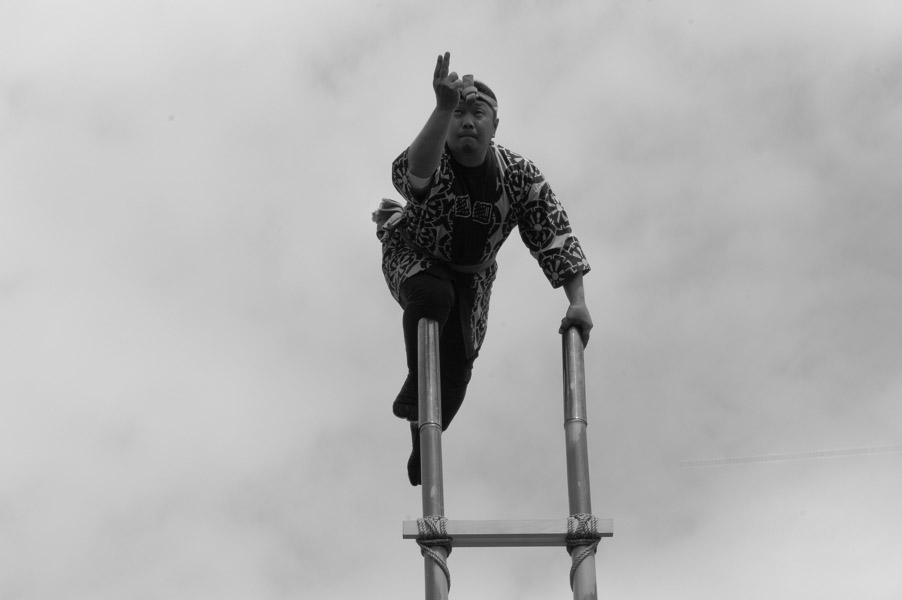
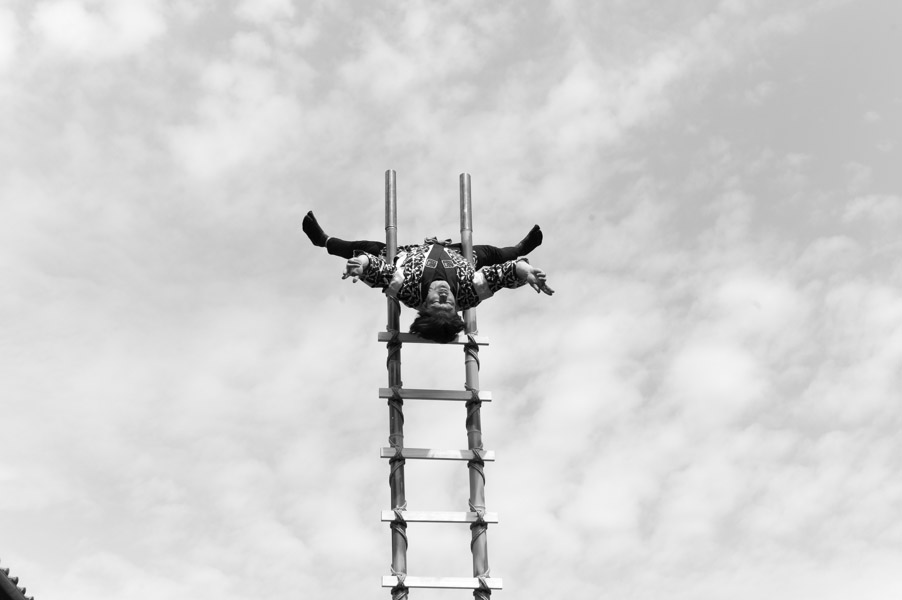
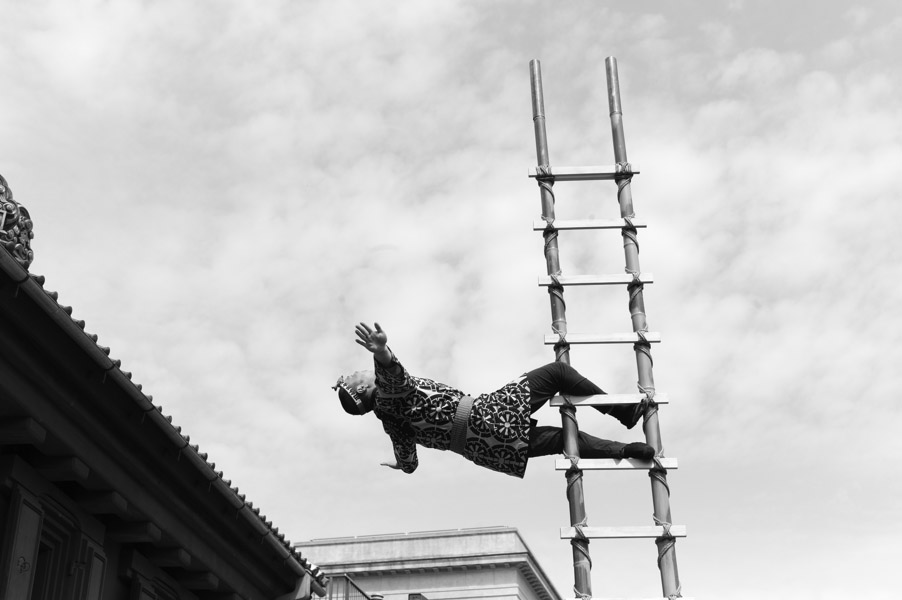
During the performances the “ground crew” keeps the ladder in balance with hooks, which might been also helpful tools during fires.Note also the different clothing they are wearing, indicating the rank within the brigade.
And now the last three stunts from a different perspective and the third performance that morning.
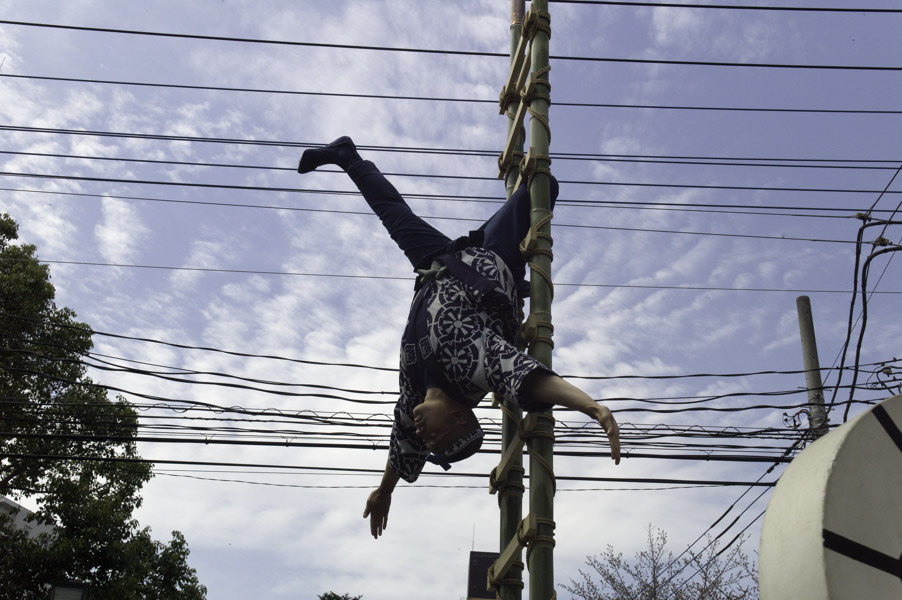

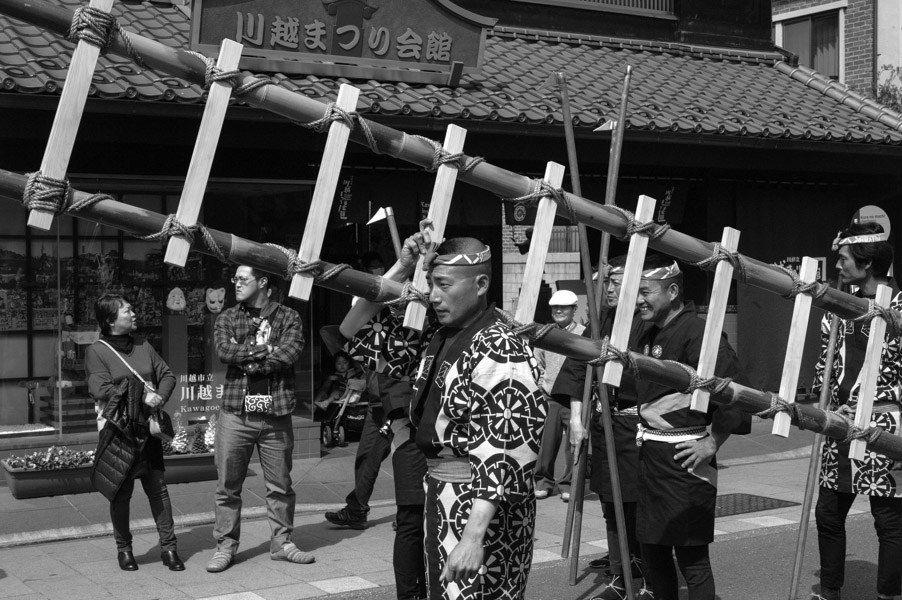
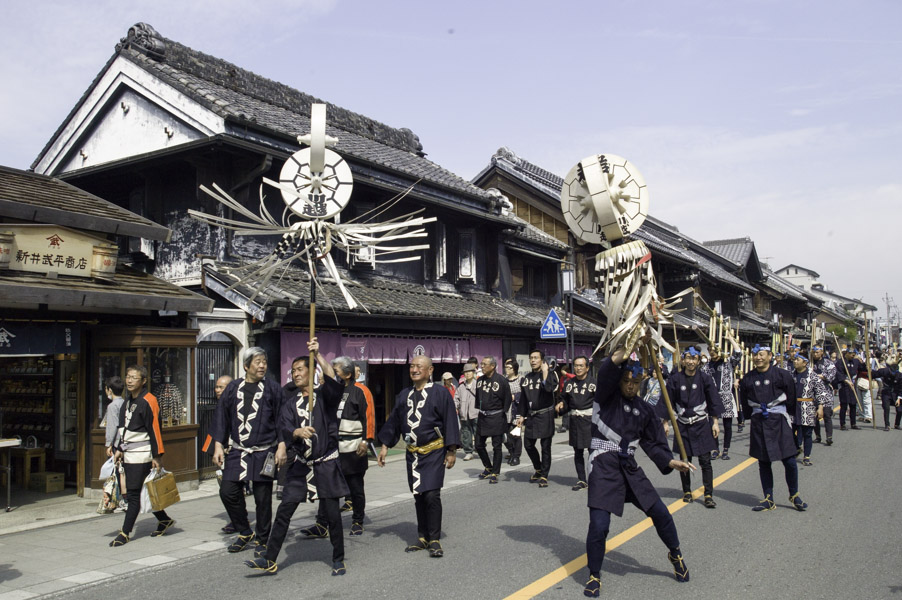
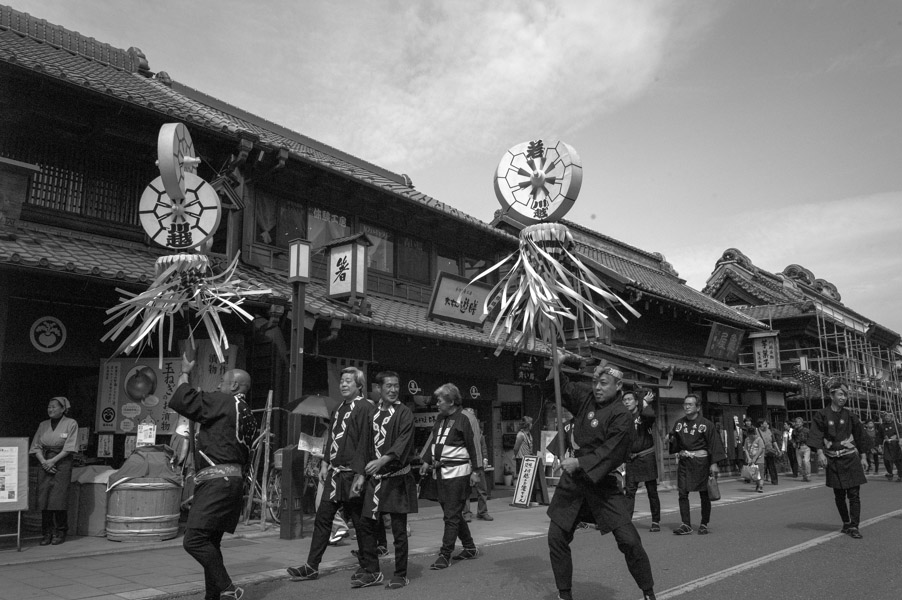
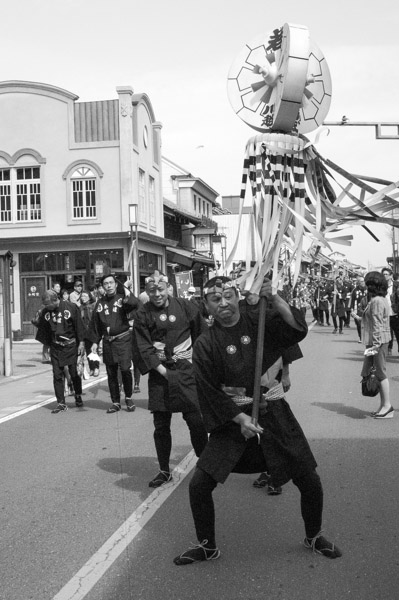
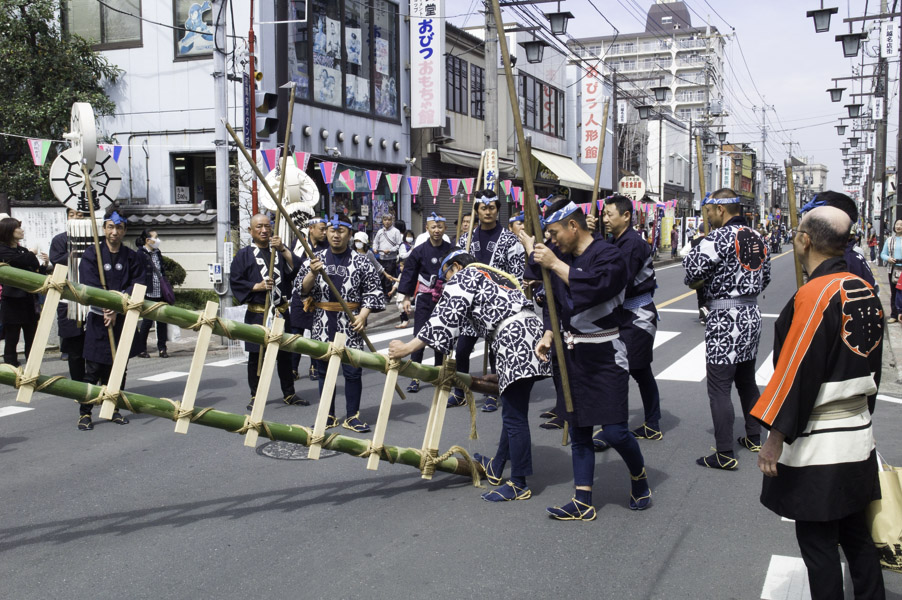
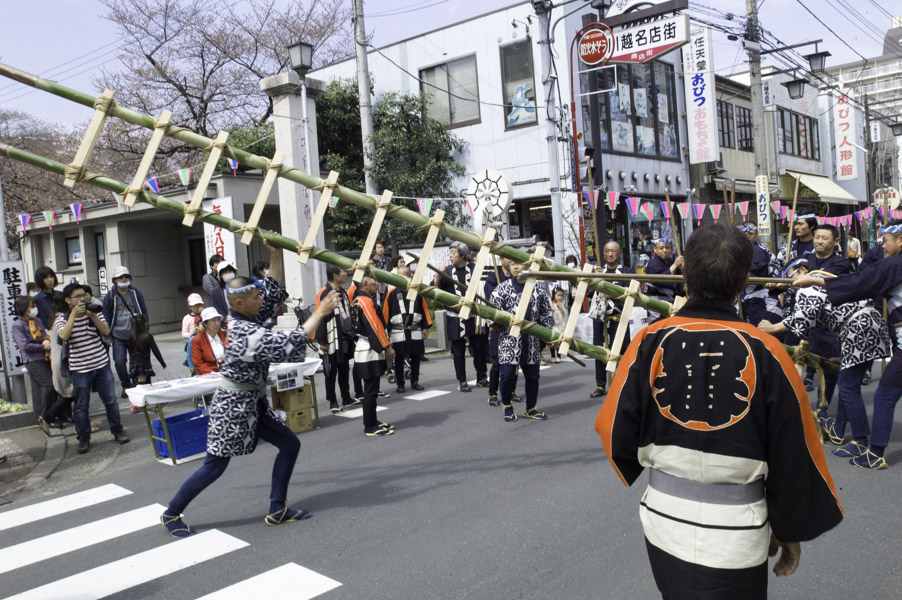
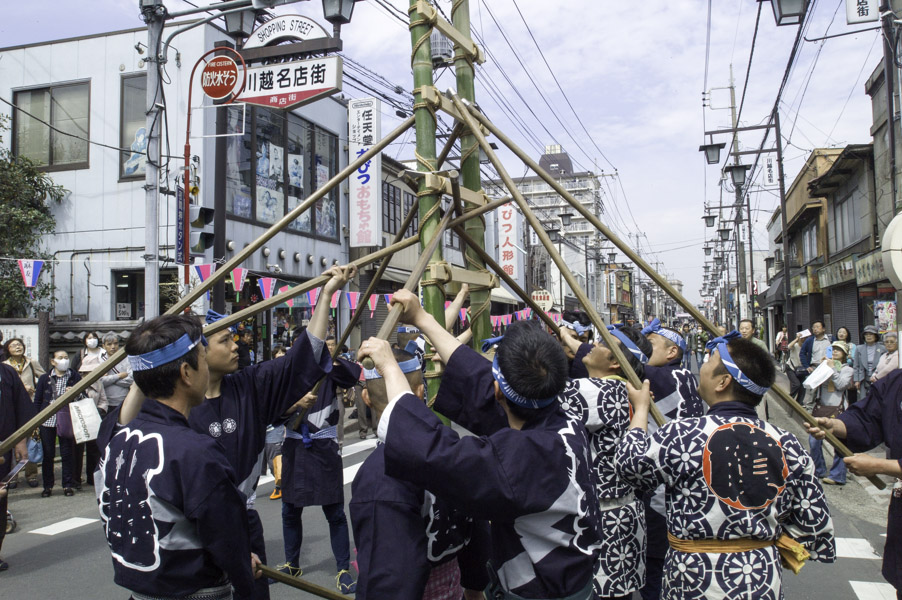
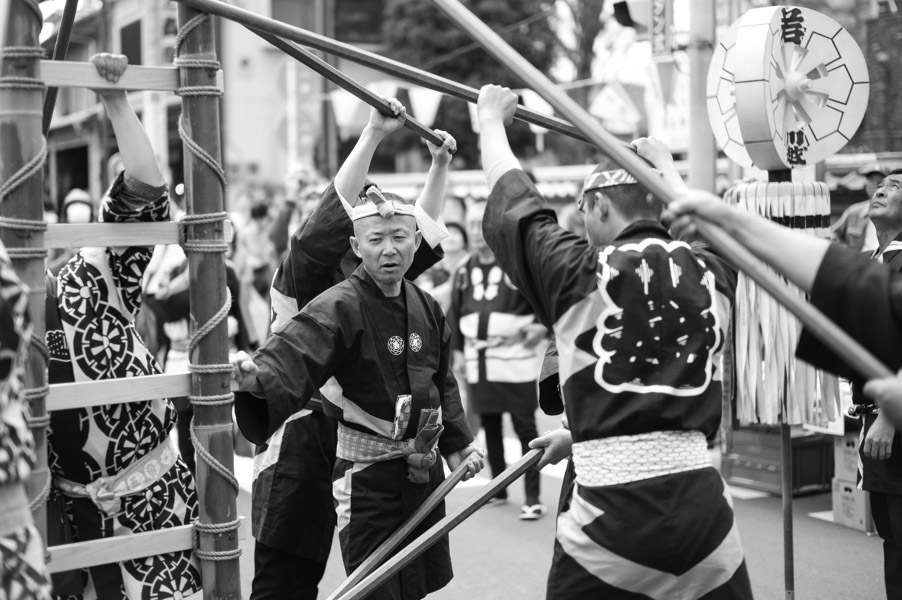
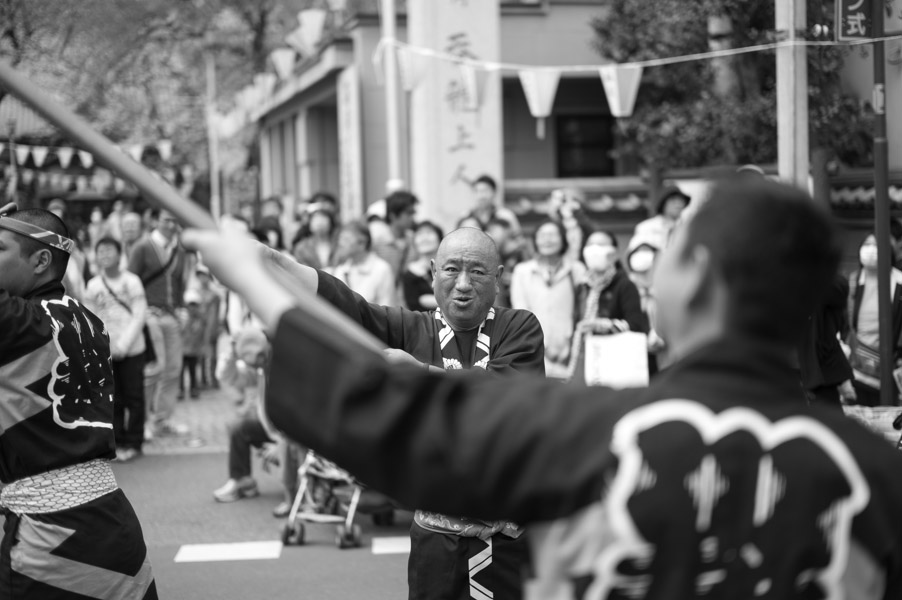
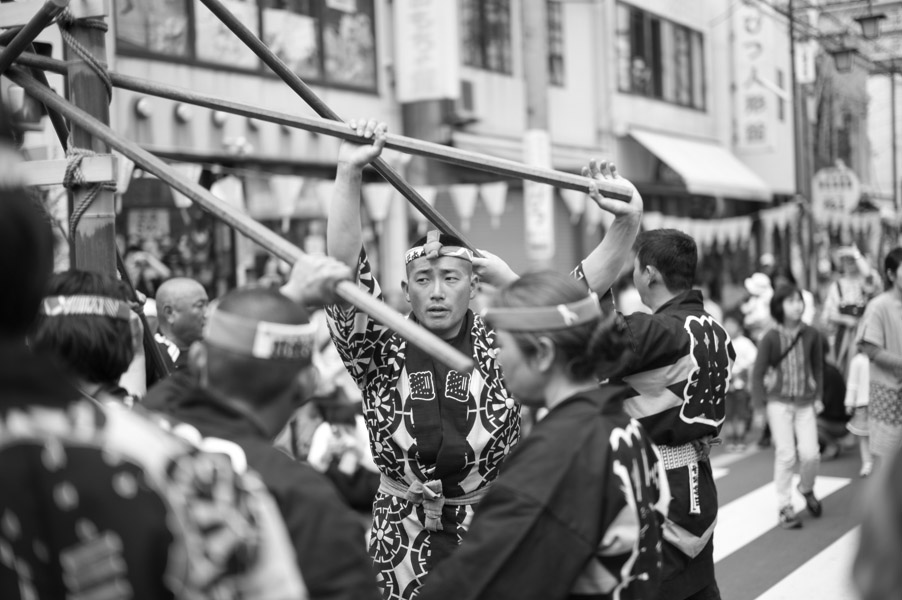
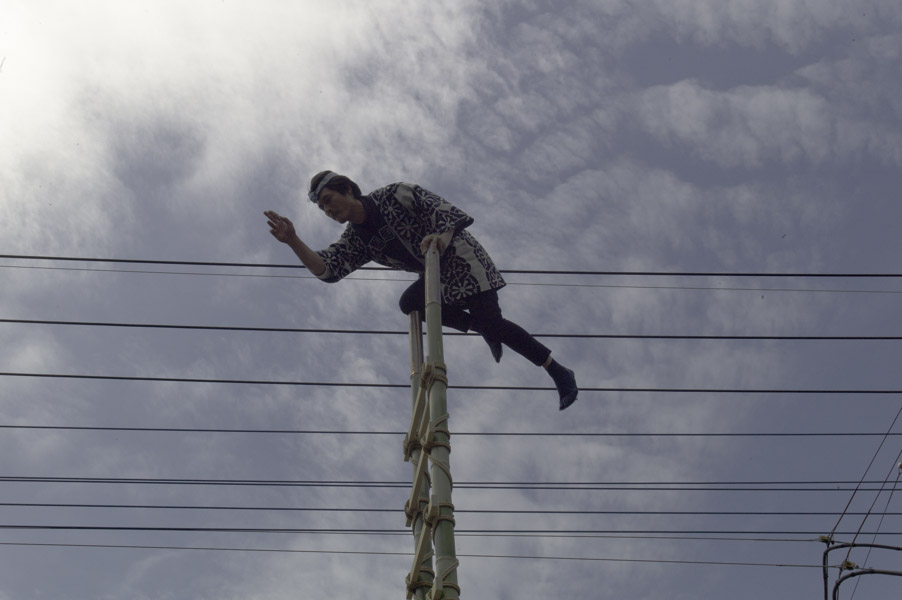
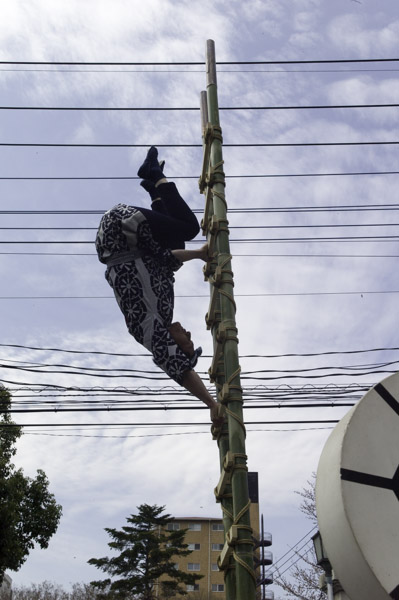
Leave a Reply